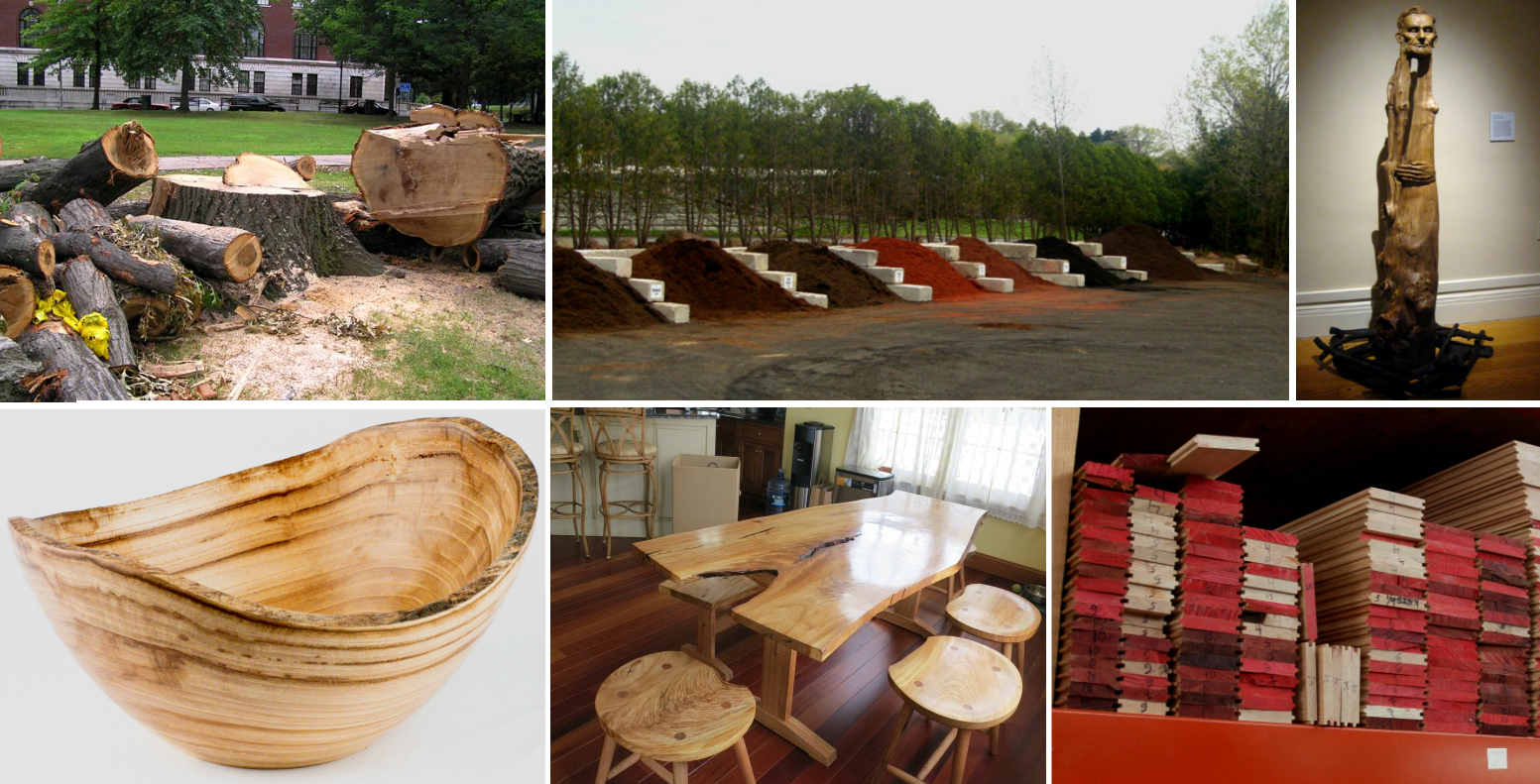Urban Wood Utilization in Connecticut
Wood from urban trees is often underused, with the disposal of this wood seen mostly as an expense. Yet, there are plenty of alternatives for urban wood use that can be cost-effective and have environmental and economic benefits for the community.
Benefits of Urban Wood Utilization
Economic
- Recovering the costs of removing damaged trees.
- Reducing costs derived from tree waste disposal and the avoidance of tipping fees.
- Generating a source of income for the community.
Environmental
- The utilization (recycling) of municipal trees can contribute to the conservation of forestland resources by generating wood products from trees that need to be removed anyway.
- Reducing the volume of waste disposal and wood in landfills.
- Urban wood that stays as wood, such as in high-end furniture, stores carbon for an extended period of time.
- Because urban wood originates in population centers close to processors and end users, transportation distances and associated emissions are minimized.
- Contributions to global and local community sustainability.
Social
- Education of the public about the value of their trees.
- Education of the public about responsible management of the urban forest.
- Better connecting people to the natural world by encouraging them to see where products made of wood come from.
- Providing support for local economies.
Uses for Urban Wood
- A source of lumber for high-value wood products
- The raw material for mulch
- A prime source for energy

Upper row: (Left to right) Removal of urban trees; Colored wood mulch - Supreme Forest Products, Southington, CT; Sculpture by artist Susan Clinard made with wood from the emblematic Lincoln Oak that fell down during Tropical Storm Sandy (2012) on the New Haven Green.
Lower row: (Left to right) Bowl made with wood from an elm tree removed at Battell Chapel, Yale University Campus, New Haven, CT (Photo courtesy Yale Bowls); Trestle table with benches made with wood from an urban elm in Glastonbury, CT (Photo courtesy City Bench); Flooring boards at Moore's Sawmill, Bloomfield, CT.
You can read more about urban wood utilization in this guide, "The Use of Wood from Urban and Municipal Trees". Printed versions of this document are available through the DEEP Division of Forestry.
Content updated in November 2021.

